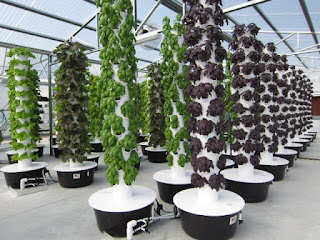Chocolate is my
perdition. If I could eat some every
day, I would. Sadly, I have come to
realize that after turning 40, it adds to my waistline tremendously if I have
it for a few days in a row. However, I
do try and have some every week. These
days there are tons of mysteries – my other favourite genre after food writing
– that are set in the gastronomic field and include recipes. My latest discovery are the Regency mysteries starring Lady Arianna
Hadley and Lord Alessandro Saybrook, penned by Andrea Penrose (which I briefly mentioned here)
It is here when
war hero Lord Alessandro De Quincy, the Earl of Saybrook is called to investigate
under a special service to the Crown. The
pair run into quite a scheme, similar to what is known as the South Sea Bubble,
which was, quite literally, the first big financial meltdown of the world.
There are several books and online
resources about the South Sea Bubble so I will not go into detail here. A website I found quite informative is http://www.thebubblebubble.com/south-sea-bubble
by economic analyst Jesse Colombo. Suffice
it to say that the scheme came into being after the war of Spanish Succession,
where Britain was granted exclusive trading rights with the Spanish colonies in
America and the West Indies. The South
Sea Company was created to assume Britain’s war debt, and almost everybody in
the country bought stock into it, on the premise of outstanding returns based
on the (expected?) existence of innumerable amounts of gold and silver in the
colonies.
 |
| A stock certificate from the South Sea Company |
Of course, such
existences were grossly overrepresented, and when the British government just
could not hold their finances together any longer, the bubble popped and stock
prices plummeted out of control. The
South Sea Bubble holds great historical significance as a case study into the
movement of the financial markets and the principle of greed. Andrea Penrose’s novel, although a cozy
mystery, is also a scientific book with thorough research of the subject.
The other part of
the book that is of much interest to me is the chocolate trivia and recipes
that precede each chapter. You see,
Alessandro De Quincy had a Spanish grandmother, not only that, but one who
loved chocolate so much she kept a diary about it, full of recipes and history. Since the Prince Regent appeared to have been
poisoned by chocolate, Lord Saybrook is the only one that has true knowledge of
the new product, hence to making him the ideal candidate to investigate the
crime.
Of the 25 recipes
offered, so far I have selected 2 which have left me very fauvorably impressed.
The first one is a cake, very rich, and goes fantastic with a strong
demi-tasse accompanied by a liqueur. It
uses spelt flour, a grain from antiquity.
It is this ingredient that gives it a unique rusticity.
Chocolate Espresso
Spelt Cake
Ingredients:
- ¾ cup unsalted butter, European style, softened, plus additional for the pan
- ¾ cup unsweetened Dutch processed cocoa powder, plus additional for dusting pan and cake
- 1 cup boiling hot water
- 1 ½ Tbsp. instant espresso powder
- 1 ½ tsp. Mexican vanilla
- 1 tsp baking soda
- 14 Medjool dates, pitted and coarsely chopped
- 2 cups spelt flour
- 2 tsp baking powder
- ¾ tsp salt
- 1 cup packed Moscovado sugar
- 2 large eggs
Preparation:
Stir together
boiling hot water, espresso powder, vanilla and baking soda in a bowl, then add
dates, mashing lightly with a fork. Soak
until liquid cools to room temperature – about 10 minutes.
Put oven rack in
the middle position and preheat oven to 350F.
Butter a 9” springform pan, then lightly dust with cocoa powder,
knocking out the excess.
 |
| The batter before going into the oven |
Whisk together
spelt flour, cocoa powder, baking powder and salt in another bowl. Beat together butter and brown sugar with an
electric mixer at medium-high speed until pale and fluffy. Add eggs 1 at a time, beating until just
combined. Beat in the date mixture
(batter will look curdled), then reduce speed to low and add flour mixture, a
bit at a time, mixing until just combined.
The second recipe
is for a delicious mousse with an Asian twist.
It is as simple as it is dense.
Mocha Mousse with
Sichuan Peppercorns
Ingredients for 4
servings:
- ¼ tsp Sichuan peppercorns
- 1/3 cup heavy cream
- 1 ½ tsp ground coffee beans
- 4 oz 70% cacao bittersweet chocolate, chopped
- 3 large egg whites
- 1 Tbsp sugar
- Whipped cream for garnish
Preparation:
Grind the
peppercorns with mortar and pestle.
Bring cream, coffee and pepper to a simmer in a small saucepan. Remove from heat and let steep, covered, for
30 minutes. Strain liquid through a fine
mesh sieve into a bowl, pressing on solids.
Melt the
chocolate in a large bowl. Stir in the
cream. Let cool slightly.
Beat the egg
whites with the sugar using an electric mixer until they just hold off stiff
peaks. Fold into the chocolate mixture
gently but thoroughly. Spoon the mousse
into pots or glasses and chill at least 3 hours. Serve with a dollop of sweetened whipped
cream.











